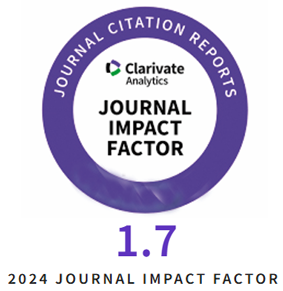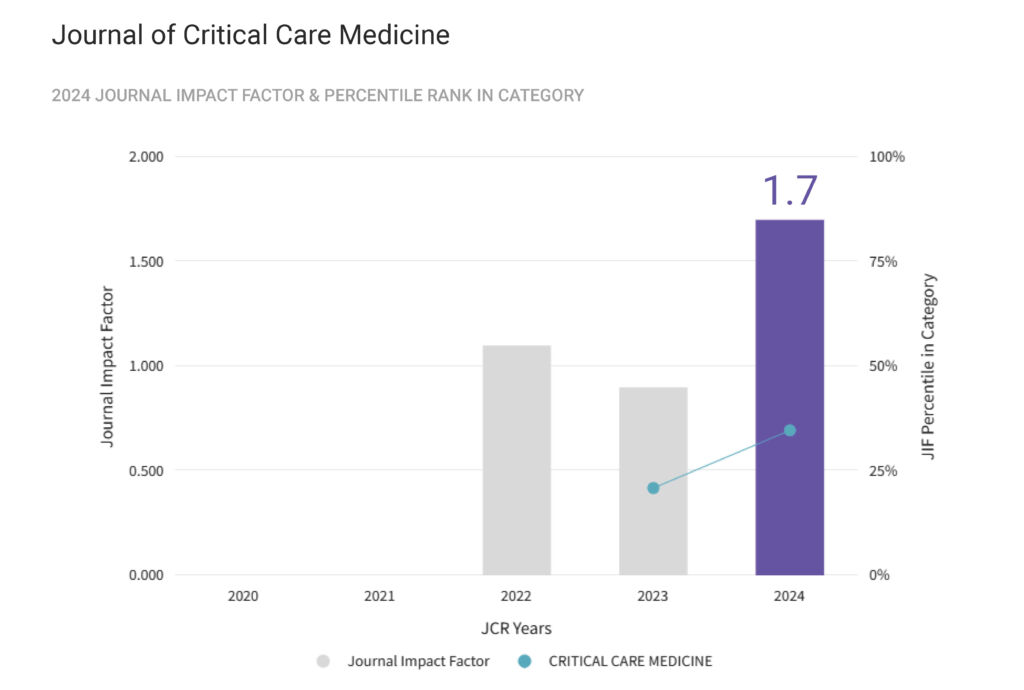Introduction: Traumatic brain injury (TBI) has become a significant cause of death and morbidity in childhood since the elucidation of infectious causes within the last century. Mortality rates in this population decreased over time due to developments in technology and effective treatment modalities.
Aim of the study: This retrospective cohort study aimed to describe the volume, severity and mechanism of all hospital-admitted pediatric TBI patients at a university hospital over a 5-year period. Material and
Methods: This was a single-center, retrospective cohort study including 90 pediatric patients with TBI admitted to a tertiary care PICU. The patients’ demographic data, injury mechanisms, disease and trauma severity scores, initiation of enteral nutrition and outcome measures such as hospital stay, PICU stay, duration of mechanical ventilation, mortality, and Glasgow Outcome Scale (GOS) were also recorded. Late enteral nutrition was defined as initiation of enteral feeding after 48 hours of hospitalization.
Results: Of the 90 patients included in the cohort, 60% had mild TBI, 21.1% had moderate TBI and 18.9% had severe TBI. Their mean age was 69 months (3-210 months). TBI was isolated in 34 (37.8%) patients and observed as a part of multisystemic trauma in 56 (62.2%). The most commonly involved site in multisystemic injury was the thorax (33.3%). The length of hospitalization in the late enteral nutrition group was significantly higher than that in the early nutrition group, while the PICU stay was not significantly different between the two groups. The multiple logistic regression analysis found a significant relationship between GOS-3rd month and PIM3 score, the presence of diffuse axonal injury and the need for CPR in the first 24 h of hospitalization.
Conclusion: Although our study showed that delayed enteral nutrition did not affect neurologic outcome, it may lead to prolonged hospitalization and increased hospital costs. High PIM3 scores and diffuse axonal injury are both associated with worse neurologic outcomes.
Tag Archives: traumatic brain injury
Lung Injury Risk in Traumatic Brain Injury Managed With Optimal Cerebral Perfusion Pressure Guided-Therapy
Introduction: Management of traumatic brain injury (TBI) has to counterbalance prevention of secondary brain injury without systemic complications, namely lung injury. The potential risk of developing acute respiratory distress syndrome (ARDS) leads to therapeutic decisions such as fluid balance restriction, high PEEP and other lung protective measures, that may conflict with neurologic outcome. In fact, low cerebral perfusion pressure (CPP) may induce secondary ischemic injury and mortality, but disproportionate high CPP may also increase morbidity and worse lung compliance and hypoxia with the risk of developing ARDS and fatal outcome. The evaluation of cerebral autoregulation at bedside and individualized (optimal CPP) CPPopt-guided therapy, may not only be a relevant measure to protect the brain, but also a safe measure to avoid systemic complications.
Aim of the study: We aimed to study the safety of CPPopt-guided-therapy and the risk of secondary lung injury association with bad outcome.
Methods and results: Single-center retrospective analysis of 92 severe TBI patients admitted to the Neurocritical Care Unit managed with CPPopt-guided-therapy by PRx (pressure reactivity index). During the first 10 days, we collected data from blood gas, ventilation and brain variables. Evolution along time was analyzed using linear mixed-effects regression models. 86% were male with mean age 53±21 years. 49% presented multiple trauma and 21% thoracic trauma. At hospital admission, median GCS was 7 and after 3-months GOS was 3. Monitoring data was CPP 86±7mmHg, CPP-CPPopt -2.8±10.2mmHg and PRx 0.03±0.19. The average PFratio (PaO2/FiO2) was 305±88 and driving pressure 15.9±3.5cmH2O. PFratio exhibited a significant quadratic dependence across time and PRx and driving pressure presented significant negative association with PFRatio. CPP and CPPopt did not present significant effect on PFratio (p=0.533; p=0.556). A significant positive association between outcome and the difference CPP-CPPopt was found.
Conclusion: Management of TBI using CPPopt-guided-therapy was associated with better outcome and seems to be safe regarding the development of secondary lung injury.
Brain Tissue Oxygen Levels as a Perspective Therapeutic Target in Traumatic Brain Injury. Retrospective Cohort Study
Introduction: Management of traumatic brain injury (TBI) requires a multidisciplinary approach and represents a significant challenge for both neurosurgeons and intensivists. The role of brain tissue oxygenation (PbtO2) monitoring and its impact on posttraumatic outcomes remains a controversial topic.
Aim of the study: Our study aimed to evaluate the impact of PbtO2 monitoring on mortality, 30 days and 6 months neurological outcomes in patients with severe TBI compared with those resulting from standard intracranial pressure (ICP) monitoring.
Material and methods: In this retrospective cohort study, we analysed the outcomes of 77 patients with severe TBI who met the inclusion criteria. These patients were divided into two groups, including 37 patients who were managed with ICP and PbtO2 monitoring protocols and 40 patients who were managed using ICP protocols alone.
Results: There were no significant differences in demographic data between the two groups. We found no statistically significant differences in mortality or Glasgow Outcome Scale (GOS) scores one month after TBI. However, our results revealed that GOS scores at 6 months had improved significantly among patients managed with PbtO2; this finding was particularly notable for Glasgow Outcome Scale (GOS) scores of 4–5. Close monitoring and management of reductions in PbtO2, particularly by increasing the fraction of inspired oxygen, was associated with higher partial pressures of oxygen in this group.
Conclusions: Monitoring of PbtO2 may facilitate the appropriate evaluation and treatment of low PbtO2 and represents a promising tool for the management of patients with severe TBI. Additional studies will be needed to confirm these findings.
The Impact of Hyperoxia Treatment on Neurological Outcomes and Mortality in Moderate to Severe Traumatic Brain Injured patients
Background: Traumatic brain injury is a leading cause of morbidity and mortality worldwide. The relationship between hyperoxia and outcomes in patients with TBI remains controversial. We assessed the effect of persistent hyperoxia on the neurological outcomes and survival of critically ill patients with moderate-severe TBI.
Method: This was a retrospective cohort study of all adults with moderate-severe TBI admitted to the ICU between 1st January 2016 and 31st December 2019 and who required invasive mechanical ventilation. Arterial blood gas data was recorded within the first 3 hours of intubation and then after 6-12 hours and 24-48 hours. The patients were divided into two categories: Group I had a PaO2 < 120mmHg on at least two ABGs undertaken in the first twelve hours post intubation and Group II had a PaO2 ≥ 120mmHg on at least two ABGs in the same period. Multivariable logistic regression was performed to assess predictors of hospital mortality and good neurologic outcome (Glasgow outcome score ≥ 4).
Results: The study included 309 patients: 54.7% (n=169) in Group I and 45.3% (n=140) in Group II. Hyperoxia was not associated with increased mortality in the ICU (20.1% vs. 17.9%, p=0.62) or hospital (20.7% vs. 17.9%, p=0.53), moreover, the hospital discharge mean (SD) Glasgow Coma Scale (11.0(5.1) vs. 11.2(4.9), p=0.70) and mean (SD) Glasgow Outcome Score (3.1(1.3) vs. 3.1(1.2), p=0.47) were similar. In multivariable logistic regression analysis, persistent hyperoxia was not associated with increased mortality (adjusted odds ratio [aOR] 0.71, 95% CI 0.34-1.35, p=0.29). PaO2 within the first 3 hours was also not associated with mortality: 121-200mmHg: aOR 0.58, 95% CI 0.23-1.49, p=0.26; 201-300mmHg: aOR 0.66, 95% CI 0.27-1.59, p=0.35; 301-400mmHg: aOR 0.85, 95% CI 0.31-2.35, p=0.75 and >400mmHg: aOR 0.51, 95% CI 0.18-1.44, p=0.20; reference: PaO2 60-120mmHg within 3 hours. However, hyperoxia >400mmHg was associated with being less likely to have good neurological (GOS ≥4) outcome on hospital discharge (aOR 0.36, 95% CI 0.13-0.98, p=0.046; reference: PaO2 60-120mmHg within 3 hours.
Conclusion: In intubated patients with moderate-severe TBI, hyperoxia in the first 48 hours was not independently associated with hospital mortality. However, PaO2 >400mmHg may be associated with a worse neurological outcome on hospital discharge.
Oxidative Stress and Antioxidant Therapy in Critically Ill Polytrauma Patients with Severe Head Injury
Traumatic Brain Injury (TBI) is one of the leading causes of death among critically ill patients from the Intensive Care Units (ICU). After primary traumatic injuries, secondary complications occur, which are responsible for the progressive degradation of the clinical status in this type of patients. These include severe inflammation, biochemical and physiological imbalances and disruption of the cellular functionality. The redox cellular potential is determined by the oxidant/antioxidant ratio. Redox potential is disturbed in case of TBI leading to oxidative stress (OS). A series of agression factors that accumulate after primary traumatic injuries lead to secondary lesions represented by brain ischemia and hypoxia, inflammatory and metabolic factors, coagulopathy, microvascular damage, neurotransmitter accumulation, blood-brain barrier disruption, excitotoxic damage, blood-spinal cord barrier damage, and mitochondrial dysfunctions. A cascade of pathophysiological events lead to accelerated production of free radicals (FR) that further sustain the OS. To minimize the OS and restore normal oxidant/antioxidant ratio, a series of antioxidant substances is recommended to be administrated (vitamin C, vitamin E, resveratrol, N-acetylcysteine). In this paper we present the biochemical and pathophysiological mechanism of action of FR in patients with TBI and the antioxidant therapy available.










